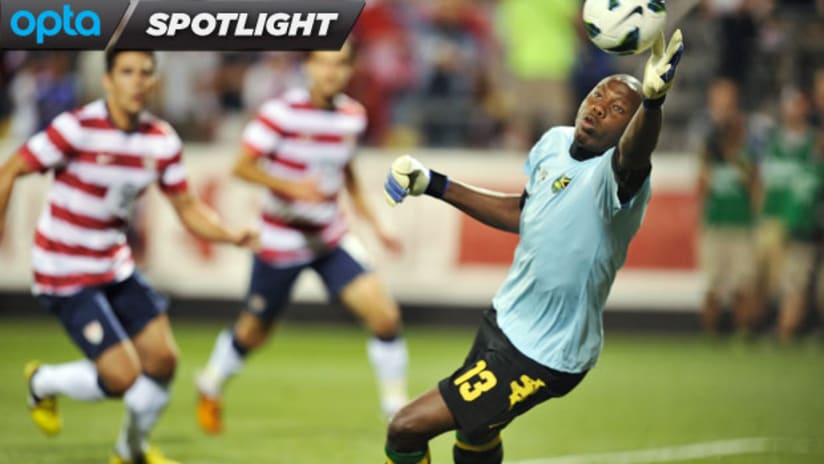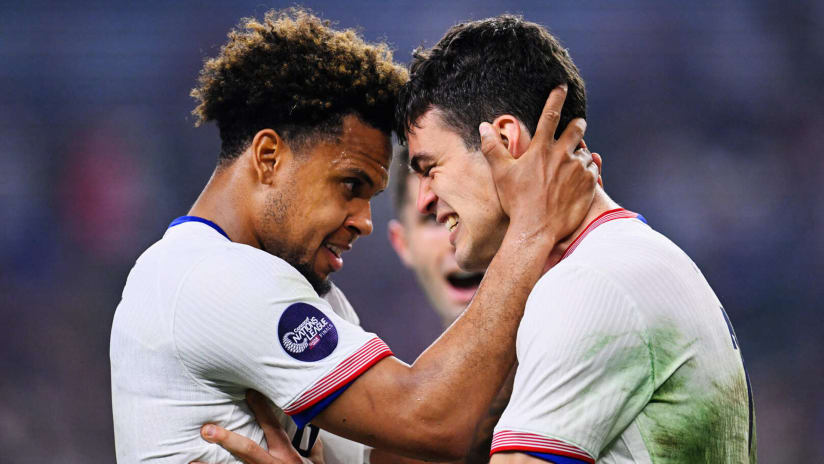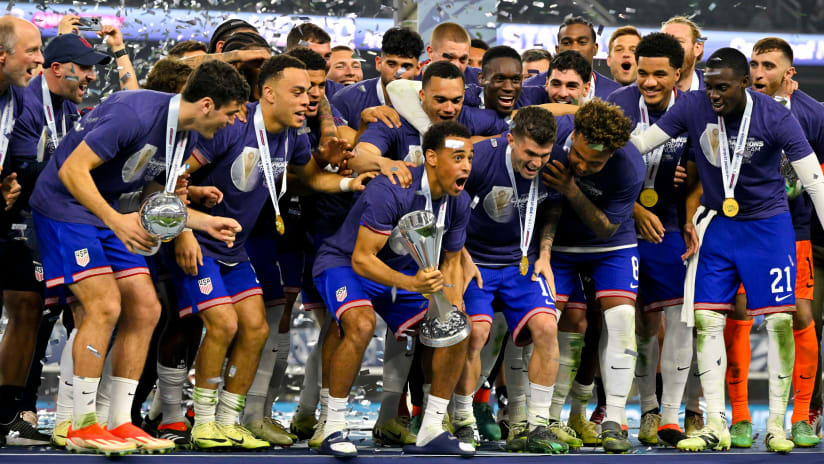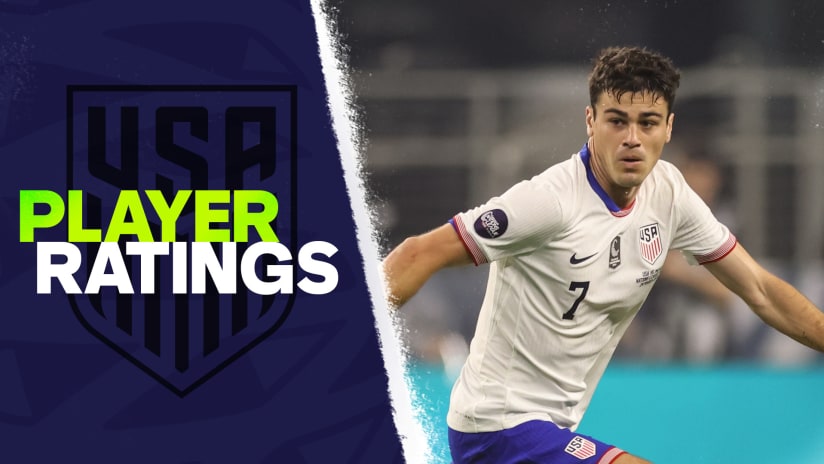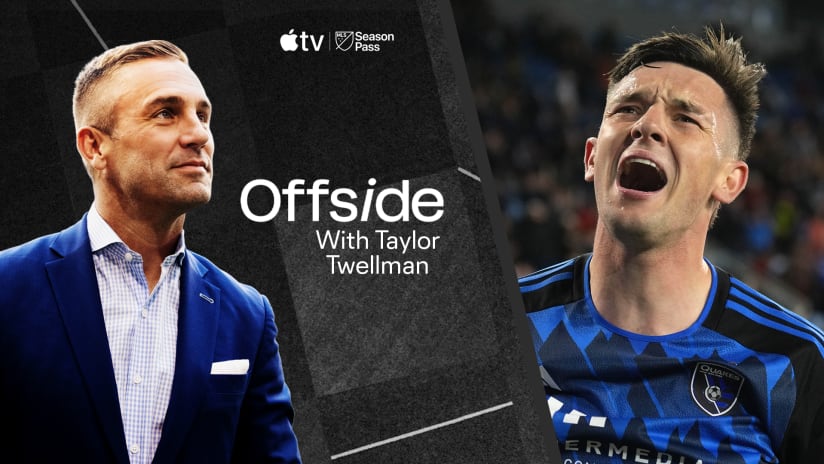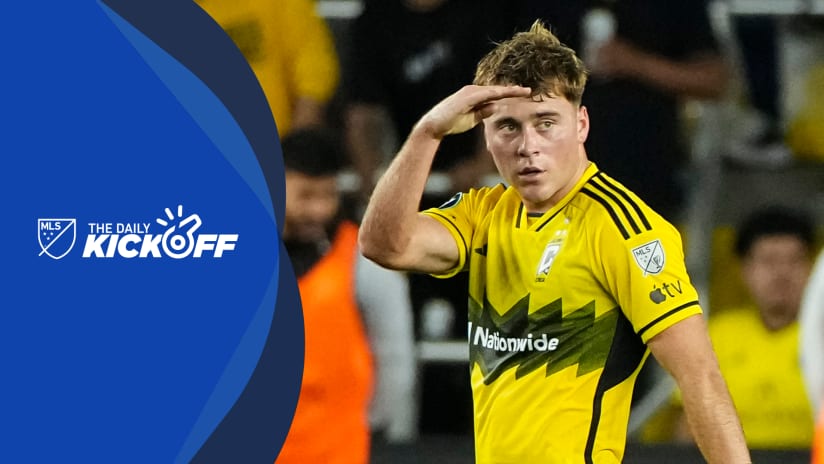Intentionally or not, Jurgen Klinsmann threw the dogs – media and fans, in this case – off the real scent on Monday when he announced his 24-man roster for what amount to must-win World Cup qualifiers against Antigua & Barbuda and Guatemala.
Most, and understandably so, cleared their vocal cords, loosened their legs and rushed all at once to tree the irresistible Jozy Altidore snub while the real issue scurried off under the cover of an easily digestible storyline. Namely, why has the US attack been relatively punchless while their main rival, Mexico, coasted to the Hexagonal?
Yes, the US need to score more goals. They need to create more chances. They need to exert their will against less-talented CONCACAF foes. Above all, they must advance to the Hexagonal. But as Greg Seltzer explained, how much that actually has to do with Altidore is debatable.
When it comes to World Cup qualifying, Altidore has played just 118 minutes of a possible 360, starting once in four opportunities. That means the issue is almost certainly systemic, and unlikely to be reversed in the short term simply by shuffling personnel.
Possession in droves but lacking a cutting edge
This much is clear through four World Cup Qualifiers: The US are winning the possession battle. Handily, at that.
Overall, the US has held 66.3 percent possession, but that only begins to explain just how skewed ball retention is in the Americans' favor. The real measurement of that dominance comes when examining where each team is attempting to connect on the field.
| USA | % Passes Attempted | Opponents |
| 9.2 | Defensive Third | 4.3 |
| 37.2 | Middle Third | 19.7 |
| 19.9 | Final Third | 9.7 |
As you can see in chart to the right, nearly 20 percent of the game is played in the opponent's final third with the US on the ball, with a further 37.2 percent bossing play in the middle third.
And yet, Klinsmann's charges have only managed six goals in four games – one via PK, one via a soft free kick and three against Antigua & Barbuda (No. 106 in FIFA's world rankings) at home – and averaged just five shots on target per game (see chart below).
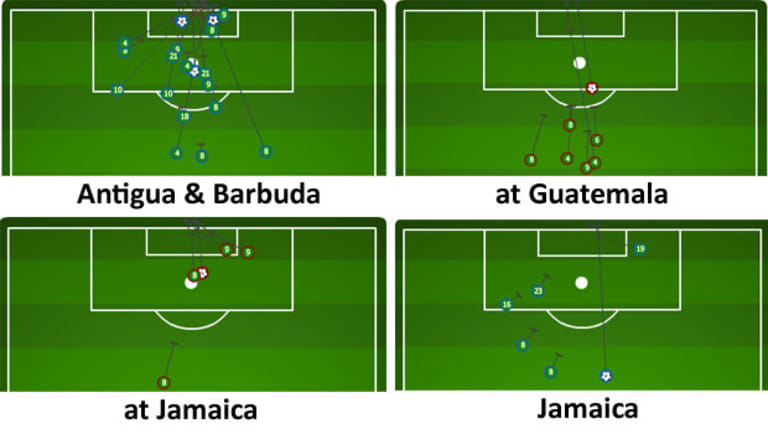
Certainly, there are a few reasons for the lack of production.
The most obvious is that teams are bunkering in the face of US pressure. As you can see from the diagrams below – mapping all successful passes, crosses, corner kicks layoffs, headers, through balls, flick-ons, key passes and assists – the ball is clearly circulating within range of goal but successful interactions plummet the closer the Americans get to the 18-yard box, which corresponds with where multiple lines of defenders would position themselves.

That congestion, and a lack of targets it seems, has also prevented the US from having any real success crossing the ball, the reason for Klinsmann's desire to include Eddie Johnson and Alan Gordon at the expense of Altidore and Terrence Boyd.
*It's also deterred the US from attempting to get in behind their opponents' backline, as evidenced by just five through balls attempted in four games while creating just one big chance (unconverted), an opportunity the recipient should be expected to score.
During World Cup qualifying, the US have attempted a total of 53 crosses (excluding corner kick) and been successful on just 10, resulting in eight headers (four on target) and zero goals. Even more damning for the forward line, only three of those successful crosses reached the head of Altidore (0), Herculez Gomez (2) or Clint Dempsey (1). The rate of potential return from corner kicks is slightly better – six finding a teammate from 18 attempted, all of which came at home vs. A&B, with Carlos Bocanegra cleaning up a rebound forced by Gomez – but Klinsmann's desire for targets is unsurprising.
Against Antigua & Barbuda in conditions unsuitable for fluid play, aerial prowess is likely to command uncommonly high value and the US must find a way to convert attempts into goal-scoring opportunities more regularly. So far, that simply hasn't happened, as the charts diagraming successful crosses and corner kicks below show.

So what does all this mean in the context of the next four days, especially in light of the fact that many of Klinsmann's primary crossers of the ball (Landon Donovan, Fabian Johnson, Edgar Castillo and Brek Shea) have been ruled out?
It simply means more emphasis is being put on service, especially from wide areas, and someone will have to pick up the slack. And in the case of Donovan, the most statistically active US forward by a long shot, there is plenty to replace, especially considering he's accounted for 13 of the US' 43 key passes and half of their successful crosses and corner kicks.
That responsibility will likely fall to Graham Zusi, Steve Cherundolo and whoever plays on the left flank. Can they find a way to generate more dangerous service into Dempsey, Gomez and the rest of the US striking corps? Can the US pull Antigua & Barbuda and Guatemala out of their shells, opening up space in and around the 18-yard box?
That remains to be seen, although the sheer talent gap between the Americans and the Benna Boys and Guatemala's desperation to advance to the Hex would certainly seem to play in the US' favor.
Either way, it seems clear Altidore's forced absence is just the tip of the iceberg for a US team struggling to find their way on the goalscoring front.

